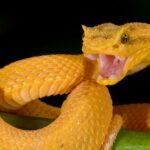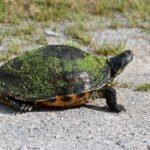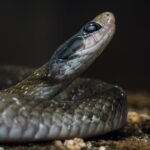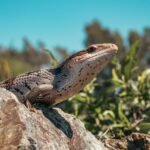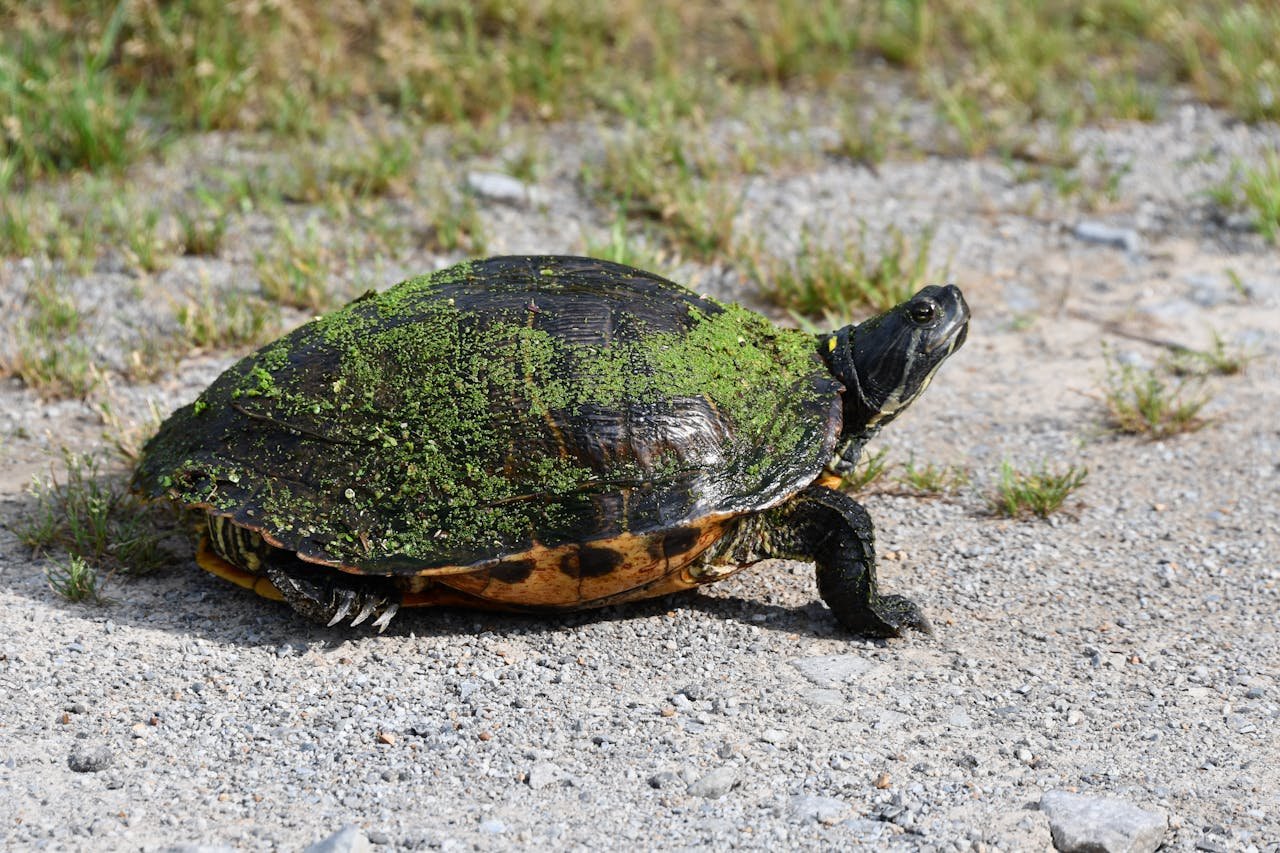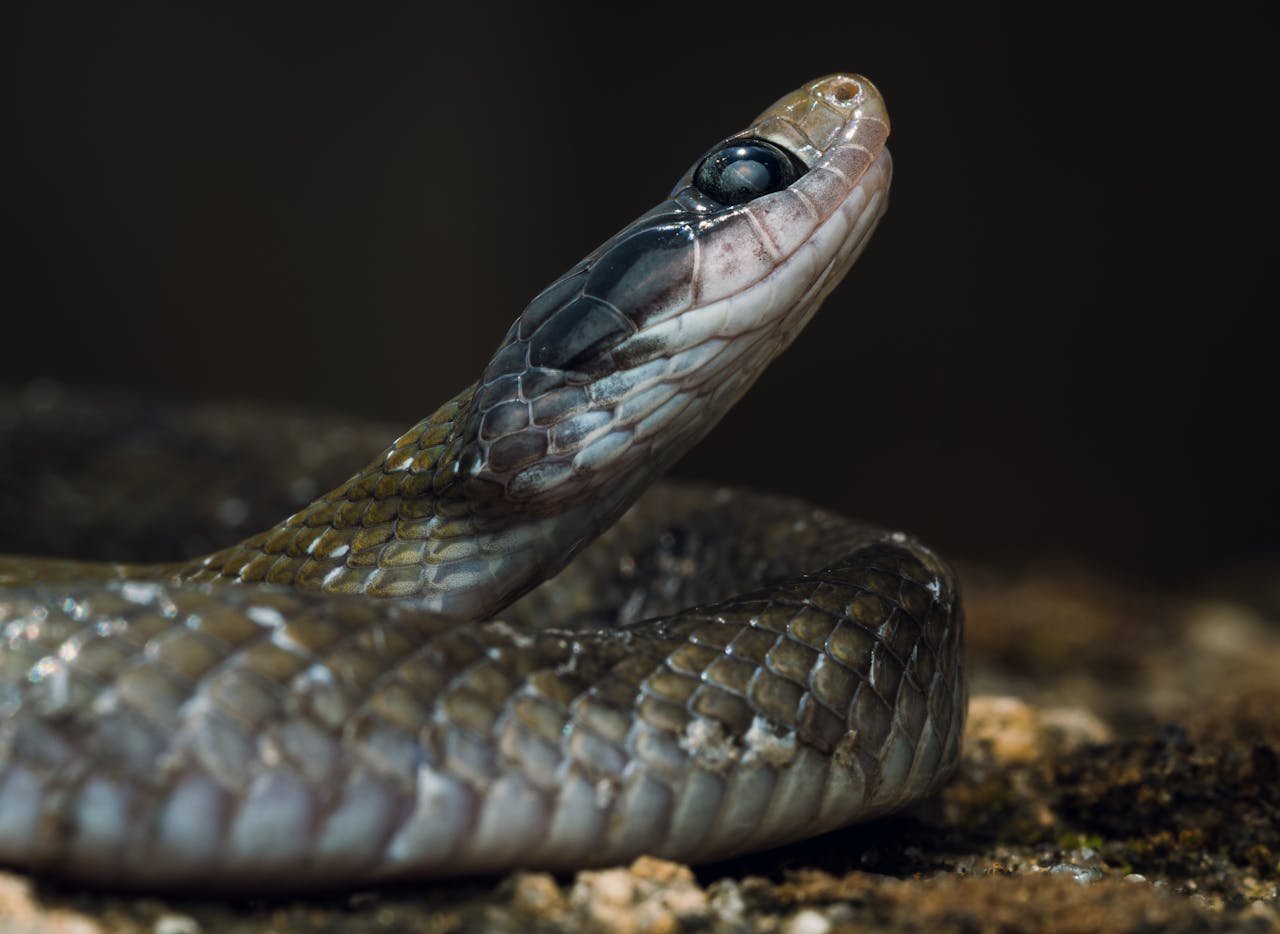The Sidewinder rattlesnake, scientifically known as Crotalus cerastes, is a fascinating and distinctive species of rattlesnake native to the southwestern United States and northwestern Mexico. Its unique adaptations and behaviors make it one of the most interesting and well-adapted serpents in the arid deserts it inhabits.
Physical Characteristics
One of the most striking features of the Sidewinder rattlesnake is its specialized form of locomotion, known as “sidewinding.” This method of movement is perfectly suited to the shifting sands of its desert habitat. Unlike other rattlesnakes that move in a straight line or use a concertina-like motion, the Sidewinder moves sideways, making a series of J-shaped curves. This technique minimizes contact with the hot sand and helps the snake maintain traction.
The Sidewinder rattlesnake measures between 18 and 30 inches in length, with females generally being slightly longer than males. It has a robust, stocky body and a relatively small, triangular head that is distinct from its neck. Its coloration is primarily a sandy or light brown with darker, blotchy patterns that provide excellent camouflage against the desert sands. This cryptic coloration helps the Sidewinder remain hidden from predators and potential prey.
### Habitat and Distribution
The Sidewinder rattlesnake is primarily found in the desert regions of the southwestern United States, including parts of Arizona, California, Nevada, and Utah, as well as in northwestern Mexico. It favors sandy or loose, gravelly soils in arid and semi-arid environments. These habitats often include desert scrub, creosote bush flats, and low desert foothills.
Due to its adaptation to the harsh desert environment, the Sidewinder has developed several behaviors and physical traits that allow it to survive extreme temperatures and limited water availability. It is primarily a nocturnal hunter, emerging during the cooler evening hours to avoid the intense heat of the day.
### Behavior and Adaptations
One of the most notable behavioral adaptations of the Sidewinder rattlesnake is its unique locomotion. As mentioned, the sidewinding movement reduces contact with the hot sand and prevents overheating. This method also allows the snake to move efficiently over loose, shifting surfaces where other types of locomotion would be less effective.
Sidewinders are solitary creatures, coming together only for mating purposes. During the day, they typically hide in burrows or under rocks to avoid the heat. Their burrowing behavior not only provides protection from predators but also helps them maintain a more stable temperature. They may also use these burrows to regulate their body temperature and conserve moisture.
### Feeding and Diet
The diet of the Sidewinder rattlesnake consists mainly of small mammals, lizards, and occasionally insects. Its preferred prey includes rodents like kangaroo rats and pocket mice, which are abundant in its desert habitat. The Sidewinder uses its heat-sensing pits, located between the eyes and nostrils, to detect warm-blooded prey even in total darkness.
When hunting, the Sidewinder relies on its venomous bite to subdue its prey. The venom of the Sidewinder rattlesnake is primarily hemotoxic, meaning it affects the blood and tissues of its prey. The venom contains enzymes that help to break down tissues, making it easier for the snake to consume its prey. After a successful strike, the snake typically retreats to allow the venom to take effect before moving in to consume its meal.
### Reproduction and Lifespan
The Sidewinder rattlesnake is ovoviviparous, meaning it gives birth to live young rather than laying eggs. Mating occurs in the spring, and after a gestation period of approximately 4 to 5 months, females give birth to litters ranging from 6 to 20 young. The newborn snakes are fully independent from birth, possessing all the necessary tools for survival, including their own venom and hunting instincts.
The lifespan of the Sidewinder rattlesnake in the wild is typically between 10 and 15 years, although individuals in captivity can live longer with proper care. Their longevity is influenced by various factors, including predation, environmental conditions, and availability of food.
### Conservation Status
The Sidewinder rattlesnake is currently classified as a species of “Least Concern” by the International Union for Conservation of Nature (IUCN). Despite this relatively stable status, the Sidewinder does face threats from habitat destruction, human encroachment, and climate change. Urban expansion and agricultural development can lead to habitat loss and fragmentation, which can negatively impact local populations.
Additionally, the Sidewinder rattlesnake is sometimes killed out of fear or misunderstanding by humans. Education and awareness efforts are crucial in helping people understand the ecological importance of these snakes and promoting coexistence. Sidewinders play a vital role in controlling rodent populations and maintaining the balance of their desert ecosystems.
### Interaction with Humans
While the Sidewinder rattlesnake is generally not aggressive towards humans, it will defend itself if threatened. Encounters with humans can occur when people are hiking or camping in its habitat. In such cases, it’s important to remain cautious and respectful of the snake’s space. Sidewinders often give a warning rattle before striking, providing a chance for people to move away and avoid confrontation.
To minimize the risk of accidental bites, it’s advisable to stay on marked trails, avoid tall grass and rocky areas where snakes might be hiding, and wear appropriate footwear. If bitten by a Sidewinder, it’s crucial to seek immediate medical attention, as rattlesnake bites can be serious and require prompt treatment.
### Fascination and Research
The Sidewinder rattlesnake has captivated the interest of researchers and herpetologists due to its unique adaptations and behaviors. Studies on its locomotion, venom composition, and ecological role continue to provide valuable insights into the biology and behavior of rattlesnakes in general. The Sidewinder’s sidewinding movement, in particular, has inspired biomimicry research in fields such as robotics and engineering.
In addition to scientific research, the Sidewinder rattlesnake is also a subject of fascination for wildlife enthusiasts and photographers. Its distinctive appearance and behaviors make it a popular subject for nature documentaries and educational programs.
### Conclusion
The Sidewinder rattlesnake, with its remarkable adaptations and unique behaviors, is a testament to the incredible diversity of life in the desert environments of the southwestern United States and northwestern Mexico. Its specialized sidewinding locomotion, cryptic coloration, and venomous hunting techniques make it a fascinating and important species within its ecosystem. As we continue to study and learn from this remarkable snake, it is essential to balance our curiosity with respect and conservation efforts to ensure the survival of the Sidewinder and its desert habitsThe Sidewinder rattlesnake, scientifically known as Crotalus cerastes, is a fascinating and distinctive species of rattlesnake native to the southwestern United States and northwestern Mexico. Its unique adaptations and behaviors make it one of the most interesting and well-adapted serpents in the arid deserts it inhabits.
Physical Characteristics
One of the most striking features of the Sidewinder rattlesnake is its specialized form of locomotion, known as “sidewinding.” This method of movement is perfectly suited to the shifting sands of its desert habitat. Unlike other rattlesnakes that move in a straight line or use a concertina-like motion, the Sidewinder moves sideways, making a series of J-shaped curves. This technique minimizes contact with the hot sand and helps the snake maintain traction.
The Sidewinder rattlesnake measures between 18 and 30 inches in length, with females generally being slightly longer than males. It has a robust, stocky body and a relatively small, triangular head that is distinct from its neck. Its coloration is primarily a sandy or light brown with darker, blotchy patterns that provide excellent camouflage against the desert sands. This cryptic coloration helps the Sidewinder remain hidden from predators and potential prey.
Habitat and Distribution
The Sidewinder rattlesnake is primarily found in the desert regions of the southwestern United States, including parts of Arizona, California, Nevada, and Utah, as well as in northwestern Mexico. It favors sandy or loose, gravelly soils in arid and semi-arid environments. These habitats often include desert scrub, creosote bush flats, and low desert foothills.
Due to its adaptation to the harsh desert enviroment/
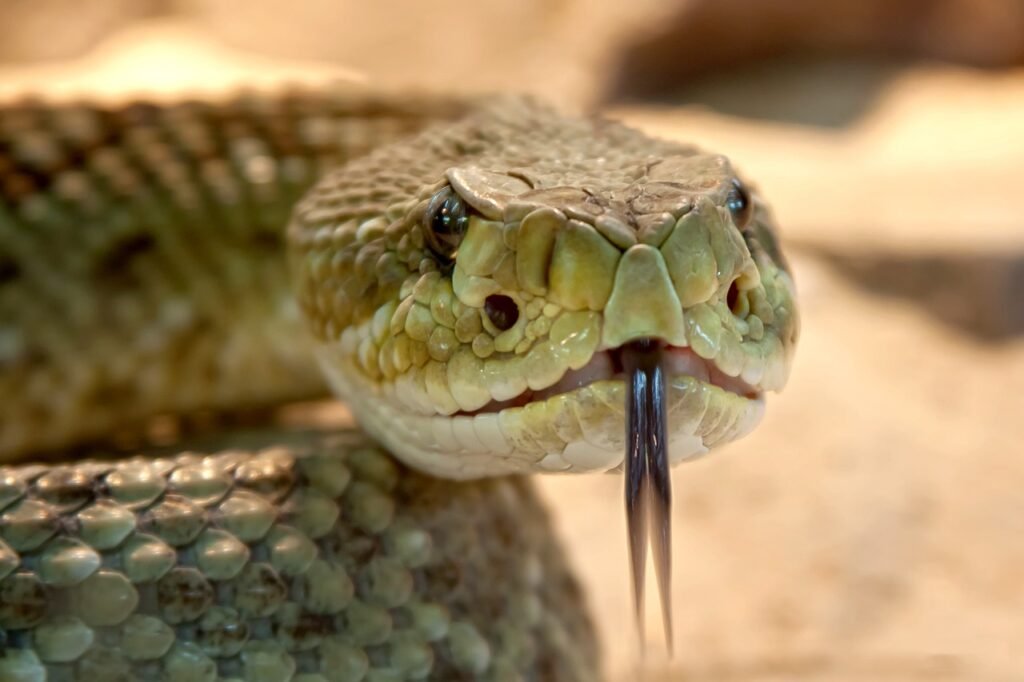
onment, the Sidewinder has developed several behaviors and physical traits that allow it to survive extreme temperatures and limited water availability. It is primarily a nocturnal hunter, emerging during the cooler evening hours to avoid the intense heat of the day.
Behavior and Adaptations
One of the most notable behavioral adaptations of the Sidewinder rattlesnake is its unique locomotion. As mentioned, the sidewinding movement reduces contact with the hot sand and prevents overheating. This method also allows the snake to move efficiently over loose, shifting surfaces where other types of locomotion would be less effective.
Sidewinders are solitary creatures, coming together only for mating purposes. During the day, they typically hide in burrows or under rocks to avoid the heat. Their burrowing behavior not only provides protection from predators but also helps them maintain a more stable temperature. They may also use these burrows to regulate their body temperature and conserve moisture.
Feeding and Diet
The diet of the Sidewinder rattlesnake consists mainly of small mammals, lizards, and occasionally insects. Its preferred prey includes rodents like kangaroo rats and pocket mice, which are abundant in its desert habitat. The Sidewinder uses its heat-sensing pits, located between the eyes and nostrils, to detect warm-blooded prey even in total darkness.
When hunting, the Sidewinder relies on its venomous bite to subdue its prey. The venom of the Sidewinder rattlesnake is primarily hemotoxic, meaning it affects the blood and tissues of its prey. The venom contains enzymes that help to break down tissues, making it easier for the snake to consume its prey. After a successful strike, the snake typically retreats to allow the venom to take effect before moving in to consume its meal.
Reproduction and Lifespan
The Sidewinder rattlesnake is ovoviviparous, meaning it gives birth to live young rather than laying eggs. Mating occurs in the spring, and after a gestation period of approximately 4 to 5 months, females give birth to litters ranging from 6 to 20 young. The newborn snakes are fully independent from birth, possessing all the necessary tools for survival, including their own venom and hunting instincts.
The lifespan of the Sidewinder rattlesnake in the wild is typically between 10 and 15 years, although individuals in captivity can live longer with proper care. Their longevity is influenced by various factors, including predation, environmental conditions, and availability of food.
Conservation Status
The Sidewinder rattlesnake is currently classified as a species of “Least Concern” by the International Union for Conservation of Nature (IUCN). Despite this relatively stable status, the Sidewinder does face threats from habitat destruction, human encroachment, and climate change. Urban expansion and agricultural development can lead to habitat loss and fragmentation, which can negatively impact local populations.
Additionally, the Sidewinder rattlesnake is sometimes killed out of fear or misunderstanding by humans. Education and awareness efforts are crucial in helping people understand the ecological importance of these snakes and promoting coexistence. Sidewinders play a vital role in controlling rodent populations and maintaining the balance of their desert ecosystems.
Interaction with Humans
While the Sidewinder rattlesnake is generally not aggressive towards humans, it will defend itself if threatened. Encounters with humans can occur when people are hiking or camping in its habitat. In such cases, it’s important to remain cautious and respectful of the snake’s space. Sidewinders often give a warning rattle before striking, providing a chance for people to move away and avoid confrontation.
To minimize the risk of accidental bites, it’s advisable to stay on marked trails, avoid tall grass and rocky areas where snakes might be hiding, and wear appropriate footwear. If bitten by a Sidewinder, it’s crucial to seek immediate medical attention, as rattlesnake bites can be serious and require prompt treatment.
Fascination and Research
The Sidewinder rattlesnake has captivated the interest of researchers and herpetologists due to its unique adaptations and behaviors. Studies on its locomotion, venom composition, and ecological role continue to provide valuable insights into the biology and behavior of rattlesnakes in general. The Sidewinder’s sidewinding movement, in particular, has inspired biomimicry research in fields such as robotics and engineering.
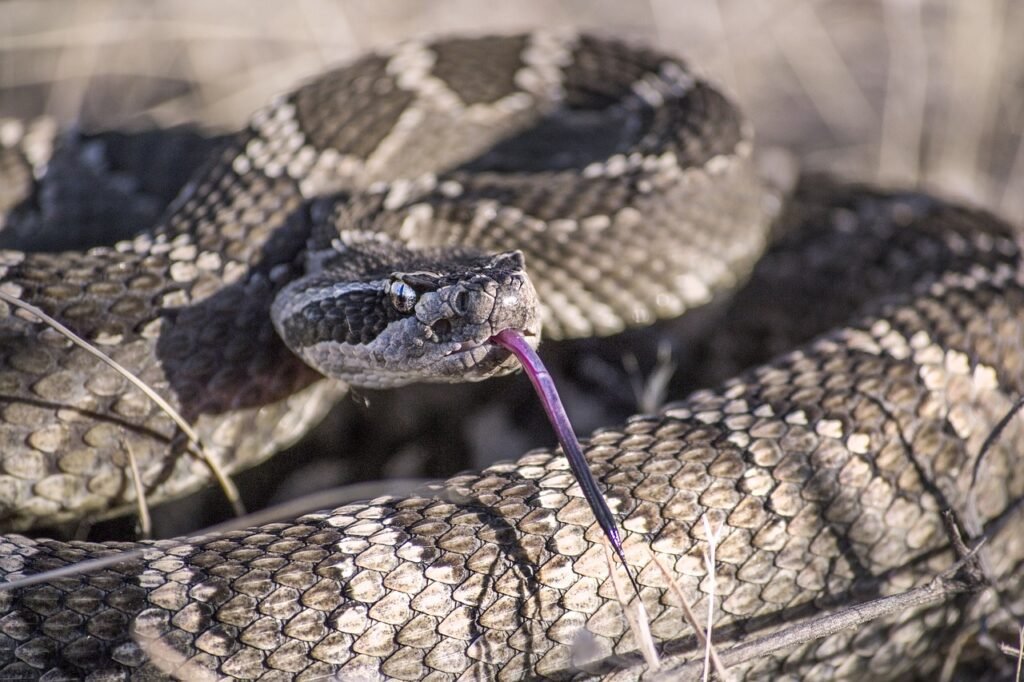
In addition to scientific research, the Sidewinder rattlesnake is also a subject of fascination for wildlife enthusiasts and photographers. Its distinctive appearance and behaviors make it a popular subject for nature documentaries and educational programs.
Conclusion
The Sidewinder rattlesnake, scientifically known as Crotalus cerastes, is a fascinating and distinctive species of rattlesnake native to the southwestern United States and northwestern Mexico. Its unique adaptations and behaviors make it one of the most interesting and well-adapted serpents in the arid deserts it inhabits.
Physical Characteristics
One of the most striking features of the Sidewinder rattlesnake is its specialized form of locomotion, known as “sidewinding.” This method of movement is perfectly suited to the shifting sands of its desert habitat. Unlike other rattlesnakes that move in a straight line or use a concertina-like motion, the Sidewinder moves sideways, making a series of J-shaped curves. This technique minimizes contact with the hot sand and helps the snake maintain traction.
The Sidewinder rattlesnake measures between 18 and 30 inches in length, with females generally being slightly longer than males. It has a robust, stocky body and a relatively small, triangular head that is distinct from its neck. Its coloration is primarily a sandy or light brown with darker, blotchy patterns that provide excellent camouflage against the desert sands. This cryptic coloration helps the Sidewinder remain hidden from predators and potential prey.
Habitat and Distribution
The Sidewinder rattlesnake is primarily found in the desert regions of the southwestern United States, including parts of Arizona, California, Nevada, and Utah, as well as in northwestern Mexico. It favors sandy or loose, gravelly soils in arid and semi-arid environments. These habitats often include desert scrub, creosote bush flats, and low desert foothills.
Due to its adaptation to the harsh desert environment, the Sidewinder has developed several behaviors and physical traits that allow it to survive extreme temperatures and limited water availability. It is primarily a nocturnal hunter, emerging during the cooler evening hours to avoid the intense heat of the day.
Behavior and Adaptations
One of the most notable behavioral adaptations of the Sidewinder rattlesnake is its unique locomotion. As mentioned, the sidewinding movement reduces contact with the hot sand and prevents overheating. This method also allows the snake to move efficiently over loose, shifting surfaces where other types of locomotion would be less effective.
Sidewinders are solitary creatures, coming together only for mating purposes. During the day, they typically hide in burrows or under rocks to avoid the heat. Their burrowing behavior not only provides protection from predators but also helps them maintain a more stable temperature. They may also use these burrows to regulate their body temperature and conserve moisture.
Feeding and Diet
The diet of the Sidewinder rattlesnake consists mainly of small mammals, lizards, and occasionally insects. Its preferred prey includes rodents like kangaroo rats and pocket mice, which are abundant in its desert habitat. The Sidewinder uses its heat-sensing pits, located between the eyes and nostrils, to detect warm-blooded prey even in total darkness.
When hunting, the Sidewinder relies on its venomous bite to subdue its prey. The venom of the Sidewinder rattlesnake is primarily hemotoxic, meaning it affects the blood and tissues of its prey. The venom contains enzymes that help to break down tissues, making it easier for the snake to consume its prey. After a successful strike, the snake typically retreats to allow the venom to take effect before moving in to consume its meal.
Reproduction and Lifespan
The Sidewinder rattlesnake is ovoviviparous, meaning it gives birth to live young rather than laying eggs. Mating occurs in the spring, and after a gestation period of approximately 4 to 5 months, females give birth to litters ranging from 6 to 20 young. The newborn snakes are fully independent from birth, possessing all the necessary tools for survival, including their own venom and hunting instincts.
The lifespan of the Sidewinder rattlesnake in the wild is typically between 10 and 15 years, although individuals in captivity can live longer with proper care. Their longevity is influenced by various factors, including predation, environmental conditions, and availability of food.
Conservation Status
The Sidewinder rattlesnake is currently classified as a species of “Least Concern” by the International Union for Conservation of Nature (IUCN). Despite this relatively stable status, the Sidewinder does face threats from habitat destruction, human encroachment, and climate change. Urban expansion and agricultural development can lead to habitat loss and fragmentation, which can negatively impact local populations.
Additionally, the Sidewinder rattlesnake is sometimes killed out of fear or misunderstanding by humans. Education and awareness efforts are crucial in helping people understand the ecological importance of these snakes and promoting coexistence. Sidewinders play a vital role in controlling rodent populations and maintaining the balance of their desert ecosystems.
Interaction with Humans
While the Sidewinder rattlesnake is generally not aggressive towards humans, it will defend itself if threatened. Encounters with humans can occur when people are hiking or camping in its habitat. In such cases, it’s important to remain cautious and respectful of the snake’s space. Sidewinders often give a warning rattle before striking, providing a chance for people to move away and avoid confrontation.
To minimize the risk of accidental bites, it’s advisable to stay on marked trails, avoid tall grass and rocky areas where snakes might be hiding, and wear appropriate footwear. If bitten by a Sidewinder, it’s crucial to seek immediate medical attention, as rattlesnake bites can be serious and require prompt treatment.
Fascination and Research
The Sidewinder rattlesnake has captivated the interest of researchers and herpetologists due to its unique adaptations and behaviors. Studies on its locomotion, venom composition, and ecological role continue to provide valuable insights into the biology and behavior of rattlesnakes in general. The Sidewinder’s sidewinding movement, in particular, has inspired biomimicry research in fields such as robotics and engineering.
In addition to scientific research, the Sidewinder rattlesnake is also a subject of fascination for wildlife enthusiasts and photographers. Its distinctive appearance and behaviors make it a popular subject for nature documentaries and educational programs.
Conclusion
The Sidewinder rattlesnake, with its remarkable adaptations and unique behaviors, is a testament to the incredible diversity of life in the desert environments of the southwestern United States and northwestern Mexico. Its specialized sidewinding locomotion, cryptic coloration, and venomous hunting techniques make it a fascinating and important species within its ecosystem. As we continue to study and learn from this remarkable snake, it is essential to balance our curiosity with respect and conservation efforts to ensure the survival of the Sidewinder and its desert habits

